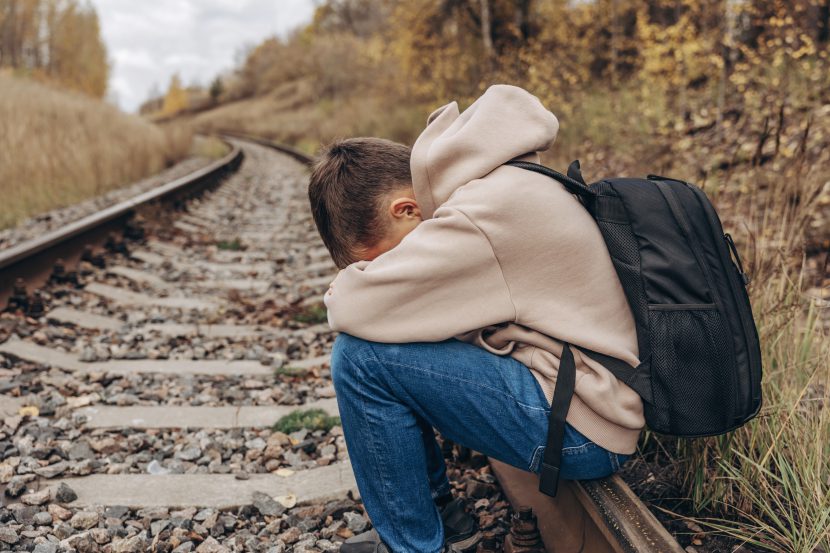The United States of America (U.S.) has seen a dramatic rise in recorded instances of anxiety and depression among its youth population (Horowitz, 2019). These mental health challenges affect youth, and in particular adolescents, across the country with roughly equal proportions despite the race, economic background or gender of the young person in question (Horowitz, 2019). Notwithstanding the severity of the mental health crisis, its invisible nature means it is seldom given as much attention as competing national and global crises, such as the COVID-19 pandemic.
The causes and drivers of the mental health crisis
Mental health challenges are a biproduct of an array of factors. At a biological level, genetic makeup and brain chemistry can predispose particular adolescents to mental health challenges (U.S. Surgeon General Advisory, 2021). However, the influence of these innate factors is dwarfed by the role of relationships, upbringing and societal conditions which shape children’s life experiences and self-perceptions, creating distress.
These community factors can be broken down into a few main groups such as greater awareness around mental health, the use of digital and social media, limited access to mental health support, etc. Unfortunately, an absence of preventative measures and appropriate treatments is preventing adolescents from accessing the support they need to navigate life’s unpredictability. This is hampering adolescents’ ability to develop in a full and healthy manner (U.S. Surgeon General Advisory, 2021).
A closer look into the current state
In the last 15 years, statistics on adolescent mental health across the U.S. have showcased a sharp increase in mental health disorder diagnoses. A pre-pandemic study from the U.S. Surgeon General Advisory stated that 20% of children aged 3 to 17 had a reported mental disorder (U.S. Surgeon General Advisory, 2021). However, within this statistic, and inclusive of the broad range of mental health disorders, the main issues in the country can be broken down into a series of specific trends.
At the forefront of these trends is the increase in depression among adolescents and children.Between 2009 and 2019, 40% more high schoolers reported persistent feelings of sadness (U.S. Surgeon General Advisory, 2021). According to a 2021 study from the Centre for Disease Control and Prevention (CDC), this number has risen to 44% (Thompson, 2022). These challenges can be broken down into numerous aspects of adolescent life.
In as early as 2016, the National Survey of Children’s Health showcased that 20% of children (aged 6-17) had struggled to make friends, while over 30% had experienced bullying (Annie Casey Foundation, 2022). Additional studies from the Pew Research Centre showed that 61% of adolescents feel pressure to achieve high grades at school and approximately 30% feel pressure to look good and fit in socially (Horowitz, 2019). Cumulatively, modern adolescents are facing greater social pressures at and away from permanent education, leading to a myriad of depression-based challenges.
The above trend is often connected to the growing accessibility of social and other media. Teenagers spend an average of over five hours per day on social media and this led to an associated 30% decline in sleep between 2007 and 2019 (Thompson, 2022). Poor regulation of social media platforms has further allowed large companies to collect as much data as possible on young people to inform content and ‘keep them clicking’ (The White House, 2022).
Due to the rapid rate of technology development, regulators have failed to keep pace and have left a generation of children exposed to the harms of the vast amounts of media at their fingertips. This media affects their self-perception, feeds greater fears about broader societal issues and takes them away from good habits.
A third identified trend is the growing inequity in the categories of adolescents affected by specific mental disorders. Individual mental health challenges, while universally detrimental to all children in the U.S., disproportionately affect certain subgroups. Suicide and attention deficit disorder, for example, is more prevalent among adolescent boys, while anxiety, depression and eating disorders predominantly affect girls (U.S Surgeon General Advisory, 2021). Girls are also more likely to feel pressured to look good and feel general anxiety and nervousness about their day (Horowitz, 2019).
A greater risk of mental health issues amongst racial, ethnic and gender minorities
Gender aside, African-American children are almost twice more likely to die by suicide than their white equivalents, while those in impoverished communities are almost three times as likely to develop general mental health conditions (U.S. Surgeon General Advisory, 2021). Following the COVID-19 pandemic, American Indian or Alaska Natives were shown to experience anxiety at higher levels than other races and ethnicities (The White House, 2022).
A 2022 study of LGBTQ adolescents were also shown to be less likely to seek out mental health support for reasons that include: concerns over judgement, fear of discussion and being misunderstood, and logistical challenges (cost, access and transportation) (The White House, 2022).

Suicide has emerged as a particular threat to adolescent life in the U.S. and is now the second leading cause of death among persons aged 10 to 34 (Stone, Jones & Mack, 2021). Between 1999 and 2019, around 800,000 U.S. deaths were listed as suicides (Stone, Jones & Mack, 2021).
In 2016 alone, over 2,500 children aged 10 to 19 died by suicide (Annie Casey Foundation, 2022). The U.S. hosts the highest suicide rate among wealthy global nations and over 20% of young women, and 10% of young men experience major clinical depression before they turn 25 (Prinstein, 2022).
Attempted suicide is also a concern, with emergency department visits rising by 51% among adolescent girls (The White House, 2022). Economic estimates of the ‘work-loss’ cost of suicide sit at over $70 billion, despite clear research evidencing that suicide is preventable and requires a multidimensional response that encompassed community factors as well as personal upbringing (Stone, 2021).
Taking action to battle the ongoing mental health crisis
Alarmingly, despite grave increases in the volume of children experiencing mental health challenges, there has been little evidence of adequate treatment or preventative action. A 2016 study showed that nearly 8 million children with treatable mental health disorders had not received the required support (U.S. Surgeon General Advisory, 2021).
At the 2022 State of the Union, President Biden called on congress to implement a new national mental health strategy to provide more holistic support to adolescents and children in need. Generally, this plan seeks to achieve a series of multisectoral targets (The White House, 2022).
First, the plan seeks to pressurise private corporations to protect adolescent privacy, outlaw child advertising and eliminate intrusive data collection. This includes working with technology providers to end discriminatory algorithms, such as search engines which produce negative results when certain subgroups are input.
The plan further promises $700 million investment into behavioural health programs and mental health clinicians, and greater funding towards infant and early childhood mental health programs. In terms of emergency response, a “988” crisis hotline has been established to deliver reliable and mobile community-level support.
Mental health support will also be institutionalised into primary care settings to increase accessibility. Finally, the plan pledges investment into research on the harms of social media connecting causes to specific mental health outcomes.
Governors in 33 states across the country have cited mental health challenges as one of their main concerns (Annie Casey Foundation, 2022). With funding promised and state-level support received, the time has come for the U.S. to overhaul its protection framework for specific adolescent and child-based mental health support.

Humanium understands that mental health challenges are affecting the youth and adolescents around the world and is actively implementing actions to combat the ongoing mental health crisis. By conducting different projects and workshops and by carrying out our methodology, Humanium is continuously supporting children who have gone through abuse, trauma, child labour, poverty or lack of access to education to achieve a better future. Help us in achieving that goal by sponsoring a child, making a donation or becoming a member!
Written by Vanessa Cezarita Cordeiro
For more information:
American Academy of Pediatrics: Healthychildren.org
Child Mind Institute: Family Resource Center
UNICEF: What’s on your mind? Mental health and well-being
References:
Annie Casey Foundation. (2022). “2022 kids count data book: State trends in child well-being.” Retrieved from The Annie E. Casey Foundation, accessed on 17 October 2022.
Horowitz Menasce, J., and Graf, N. (2019, February 20). “Most U.S teens see anxiety and depression as a major problem among their peers.” Retrieved from Pew Research Center, accessed on 17 October 2022.
Prinstein, M.J. PhD. (2022, February 7). “US youth are in a mental health crisis – we must invest in their care.” Retrieved from American Psychological Association, accessed on 19 October 2022.
Stone, D.M., Jones, C.M., Mack, K.A. (2021, February 26). “Changes in suicide rates – United states, 2018-2019.” Retrieved from Centers for Disease Control and Prevention Morbidity and Mortality Weekly Report, accessed on 19 October 2022.
The White House. (2022, March 1). “Fact Sheet: President Biden to announce strategy to address our national mental health crisis, as part of unity agenda in his first state of the union.” Retrieved from The White House Briefing Room, accessed on 17 October 2022.
Thompson, D. (2022, April 11). “Why American teens are so sad.” Retrieved from The Atlantic, accessed on 17 October 2022.
U.S. Surgeon General Advisory. (2021). “Protecting youth mental health.” Retrieved from The U.S. Surgeon General’s Advisory, accessed on 19 October 2022.


